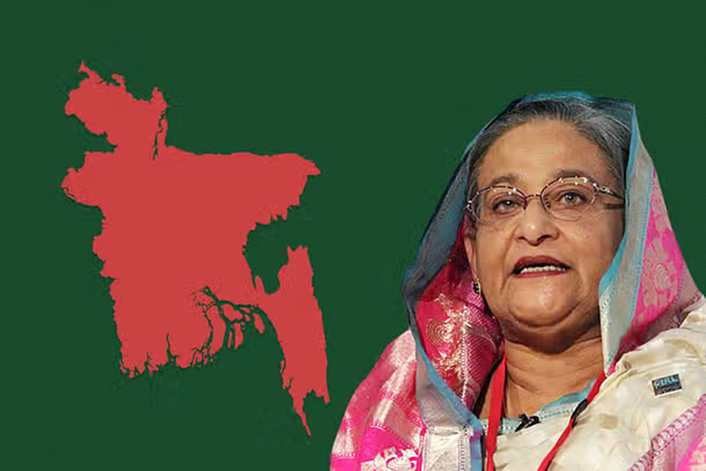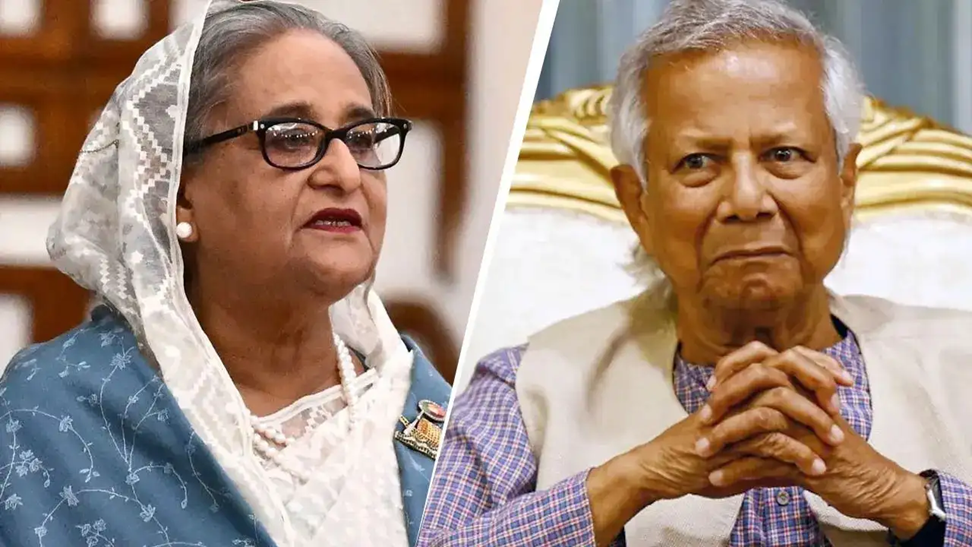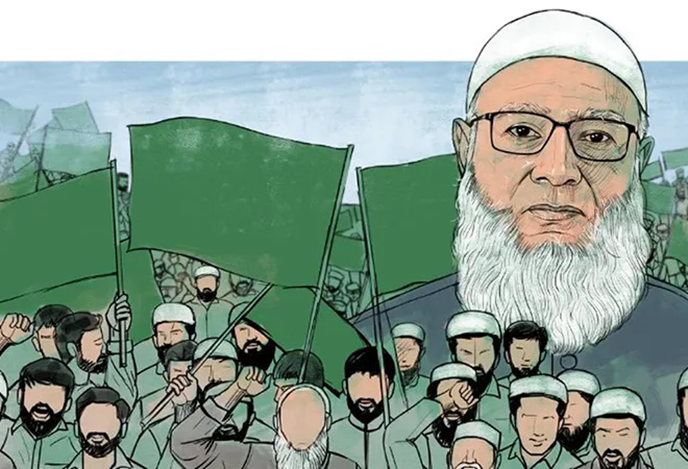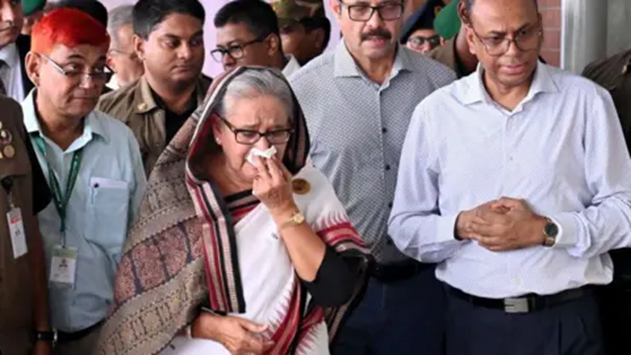A newly formed party led student demonstrations across Bangladesh. They were commemorating one year since the fall of Bangladesh’s former Prime Minister Sheikh Hasina. On August 5, 2024, Hasina, who had been in power for the past 15 years, resigned from the prime ministership and fled the country by helicopter.
Bangladesh, A Year After Sheikh Hasina’s Ouster
Why In News
- A newly formed party led student demonstrations across Bangladesh. They were commemorating one year since the fall of Bangladesh’s former Prime Minister Sheikh Hasina. On August 5, 2024, Hasina, who had been in power for the past 15 years, resigned from the prime ministership and fled the country by helicopter.
What All Happened
- Hasina fled Bangladesh amid violent protests, which started as a student-led demonstration against the controversial quota system, to a full-blown “ Monsoon Revolution”. More than 300 people lost their lives in the violent protests that eventually led to the country giving powers to an interim government led by Bangladesh’s Chief Adviser Muhammad Yunus.
- In the span of one year, a lot has changed in Bangladesh. However, the remnants of the July uprising and instability across the country remain. After Yunus came to power, he effectively banned the Awami League from contesting the election. Meanwhile, Hasina faced a plethora of legal cases. Not only this, the current ruling regime is also hunting down Hasina’s relatives in a bid to bring corrupt politicians to justice.
Trials & Tribulations Of Hasina
- On August 3 this year, Bangladesh’s International Crimes Tribunal (ICT) commenced the trial of deposed PM Hasina in absentia. Hasina has been living in India since the UK rejected her request for refuge. Since then, Bangladeshi authorities have been asking for her extradition.
- In the case overseen by Bangladesh’s ICT, Hasina has been accused of committing crimes against humanity related to the violent suppression of the 2024 student-led protests. The interim government-appointed chief prosecutor, Tajul Islam, in his opening statement, described Hasina as the “nucleus of all crimes” and called for the maximum penalty. Hasina is not the only one involved in the case. The prosecution also named Hasina’s two top aides — former home minister Asaduzzaman Khan Kamal and former Inspector General of Police Chowdhury Abdullaah Al Mamun — as the co-accused in the case. While Hasina and Kamal are being tried in absentia, Mamun is in custody and has agreed to be the “approver” in the case.
- This is not the only case in store for Hasina. Just last month, the former Bangladeshi premier was also sentenced to six months in prison in absentia in a contempt of court case by the ICT. This was the first time the 77-year-old Awami League leader has been sentenced in any case since she left office in August last year.
Erasing Bangladesh’s History And Mujibur Rehman’s Legacy
- One photograph featuring protesters climbing over Rahman’s statue and vandalising it became a symbol of the July uprising.
- Destroying Rahman’s legacy did not stop after the toppling of the Hasina government. In February this year, well after the Yunus government took over in Bangladesh, a large group of protesters vandalised and set on fire Bangladesh’s founder, Sheikh Mujibur Rahman’s residence in Dhaka during a live online address of his daughter.
- The house was an iconic symbol in Bangladesh’s history as Sheikh Mujib largely led the pre-independence autonomy movement for decades from the house, while during the successive Awami League rule, it was turned into a museum. The residence in Dhanmondi was often visited by foreign heads of state and other dignitaries.
Remains Of The Awami League
- While Hasina and top leaders of her party left the Awami League, some of her party members and workers are still in the country. Soon after Yunus came to power, his regime banned the party from contesting in polls.
- Since then, party workers have been facing all sorts of atrocities at the hands of what they are calling “goons of the ruling regime”.
Mainstreaming Of Fundamentalist
- In June this year, Bangladesh’s Supreme Court restored the registration of the country’s largest Islamist political party, Jamaat-e-Islami. Following the 2013 judgement, on December 7, 2018, the Election Commission issued a gazette officially cancelling Jamaat’s registration. The party soon appealed the High Court’s ruling.
- The party has been known for its radical propaganda and involvement in extremist activities. Recently, Nahid Islam’s newly formed group has been accused of hooliganism as well, with Awami League party functionalities often calling them the Jamaat’s B-Team.
- Overall, the law and order situation of Bangladesh continues to remain at a deplorable state. We often hear cases of rape and mob lynching, given the fact that the July uprising and the changes that followed dismantled the police infrastructure in the country.
Economy After Hasina
- After Hasina left, Yunus’s regime sought help from the International Monetary Fund (IMF) to recover the country’s economy, which had been ransacked due to the protests. To meet the IMF’s economic reform conditions, the Nobel laureate launched a wide-ranging series of institutional, fiscal, and monetary measures.
- With this goal in mind, his administration appointed Ahsan H Mansur, a former IMF economist, as governor of Bangladesh’s central bank. Soon after stepping into his new role, Mansur introduced policy measures designed to tame soaring inflation and a worsening banking crisis, including hiking interest rates, replacing the boards of 11 troubled banks, initiating efforts to recover bad loans, and repatriating laundered money.
- While these steps marked a strong start to the economic recovery, the results have been mixed. Although after Hasina’s departure, inflation has eased from 11.6 per cent in July 2024 to 9.05 per cent as of May 2025, the youth unemployment remains a pressing concern.
- In May this year, it was reported that Bangladesh’s unemployment rate had surged to its highest level in recent years amid ongoing economic and political instability. According to the latest quarterly labour force survey released today by the Bangladesh Bureau of Statistics (BBS), the country’s unemployment rate stood at 4.63 per cent in the October–December quarter of the current fiscal year. This marked a 3.95 per cent spike recorded during May 2024, when Hasina was in power. In light of this, the number of unemployed people in the country has risen to 27.3 lakh, which was up by 330,000 from 24 lakh in the same quarter of the previous year.
- While the Yunus regime attempted to stabilise the country’s economy after Hasina, it still wasn’t able to reduce unemployment rates, which affects the future of students who brought him to power in the first place.
Hope For Future
- In While challenges lie ahead for Hasina’s return, her supporters hope that one day she will come back to her homeland. Yunus-backers also wait for her return but for prosecuting her for what they “crimes against humanity”. Hasina supporters and a struggling Awami League, however, still has hopes for another turn of history, some time in future.




























